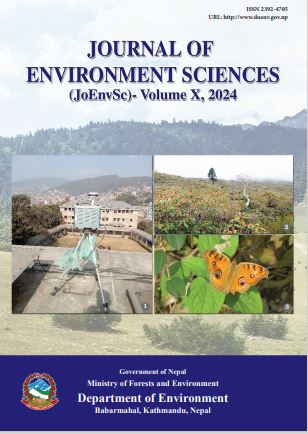Waiting Time Countdown Displays Affect the Idle-Stopping Behavior of Motorcyclists at Signalized Traffic Intersections
DOI:
https://doi.org/10.3126/jes.v10i1.66969Keywords:
Air pollution, Ecodriving, Logistic regression, Road infrastructure, Traffic lightAbstract
Transportation is an important driving force behind the surging global energy demand and a key emission source of air pollutants and greenhouse gases. Turning off vehicle engines while waiting for extended periods at traffic intersections can help reduce transport sector fuel consumption and mitigate air pollution. However, idle-stopping is a personal choice and depends on behavior and awareness among drivers. In this study, we conducted a stated preference survey among motorcyclists in Kathmandu, Nepal, to examine the effect of installing traffic lights with waiting time countdown displays at signalized traffic intersections on idle-stopping behavior and investigated if the display of waiting time countdowns could encourage idle-stopping behavior among motorcyclists. Through logistic regression analysis, we found a significant effect of waiting times on idle-stopping choices (p < 0.001). The odds ratio for waiting time was 1.051 (95% CI: 1.046-1.057), suggesting that with a 1-second increase in waiting time, the odds of motorcyclists idle-stopping their motorcycle engines increase by 5.1%. Likewise, the most commonly perceived deterrent to idle-stopping choices was the uncertain waiting time. Therefore, our results suggest that installing waiting time countdown displays at signalized traffic intersections may offer an often overlooked benefit by reducing idling fuel consumption and tailpipe emissions from on-road vehicles. Our findings will provide valuable insights for policymakers in formulating evidence-based policies and city planners in improving transportation infrastructure, especially in cities in developing economies.




